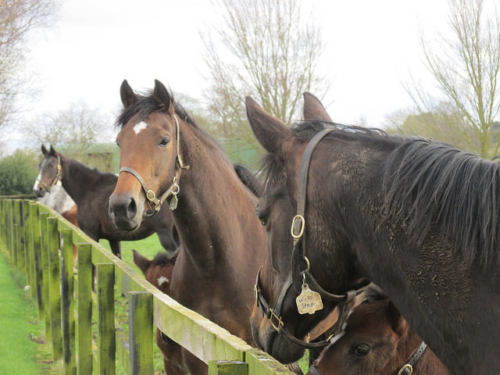
Irish National Stud isn’t a headline ripped from the pages of People Magazine. It’s a horse-lovers dream come true in County Kildare, Ireland.
Irish National Stud & Gardens, just 30 miles from Dublin, is a must visit for the equestrian, horse-crazy girls and, believe it or not, garden lovers. That’s right, this Irish Stallion playground, where some of the most coveted Thoroughbred bloodstock reside, is one of Ireland’s major tourist attractions for horses and horticulturalists.
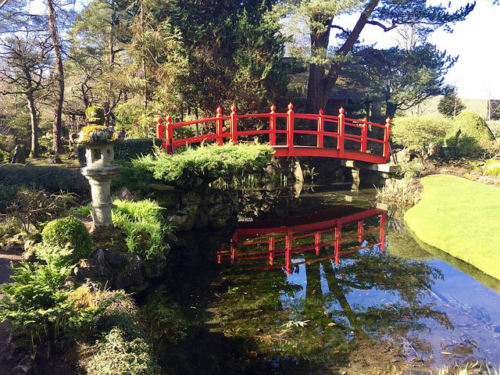
Bridge of Life in Japanese Garden. Photo © Nancy D. Brown
As soon as I spotted the horse sculpture in the round about, as our little car exited the motorway, I started getting excited. “We’re here, we’re here,” I said to my husband. “I’ve died and gone to horse heaven.” You see, this was my first visit to Ireland and I had ticked an item off my Irish bucket list early. Did I peak too soon? Like a race horse accelerating out of the starting gate, had I not paced myself appropriately? After all, this was only day 4 of a 17 day vacation. But like a curious filly anxious to stretch her legs on the track, I’m happy to say that my Ireland horse-centric holiday got better around every bend.
While I was like a race horse chomping at the bit to find the horses, our tour actually started with a moment of self reflection in the Japanese Garden. David Wardell, Tourism Development Manager at Irish National Stud, had suggested that my husband and I enjoy the self-guided 30 minute tour of the gardens before the mane event (pun intended.) I asked myself why on earth would a stud farm be interested in tying together Eastern and Western culture through rocks, trees and water in Ireland?
It turns out that while racing is the sport of kings, back in 1906, having an elaborate garden that was ‘bigger and better’ than your neighbor’s was the sport of wealthy land owners. Between 1906 and 1910 Tassa Eida was tasked with creating an elaborate garden that took its guests on a journey though the gate of oblivion, to the cave of birth, tunnel of ignorance, path of adventure, hill of ambition and well of wisdom, before ending at the chair of old age and entering the gates of eternity.
It turns out, that is the same path a horse follows, or any animal for that matter. Reflecting on the natural beauty that surrounded me in the garden, prepared me for the beauty of the horses to come.
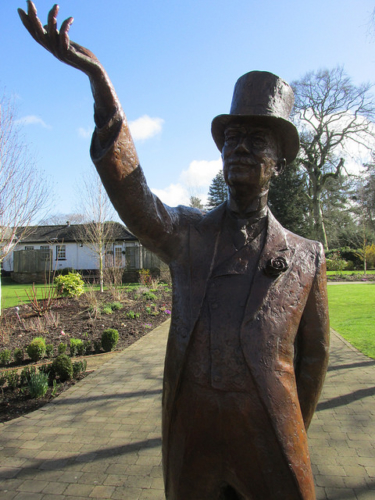
Irish National Stud Founder Colonel William Hall Walker reaches for the stars. Photo © Nancy D. Brown
From birth date to super star – beating the odds
Colonel William Hall Walker placed a lot of faith in the stars. It seemed that Colonel Walker believed that a horse’s birth date played a major role in determining its ability to win a race. Back in 1900, Walker followed his intuition and started Irish National Stud.
He also insisted the the stallion stables have skylights so the horses could see the moon and the stars. What a forward thinker Colonel Walker was. Today, 8 stallions command top dollar in the hopes that the mares they impregnate will produce the next super stars in the thoroughbred horse industry.
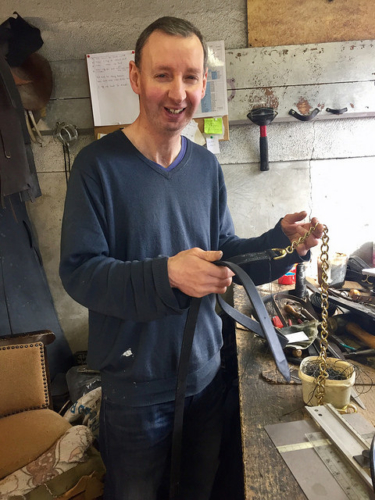
Resident saddler Noel Daffy makes the leather tack for the horses. Photo © Nancy D. Brown
What I found interesting about Irish National Stud is that the farm is 100% government owned. The bulk of the monies earned here come from the sale of the yearlings. Over 124,000 visitors come through the gates.
Children will love seeing the horses, and there is a playground, as well as picnic tables. I enjoyed meeting Noel Daffy, the resident saddler who makes all the leather tack for the horses, as well as the babies. Unfortunately, his job is a dying breed. While all equestrians, and fashion-conscious consumers, appreciate good quality leather, the hand made aspect of his job doesn’t seem to be attracting more craftsmen (and women) into the fold.
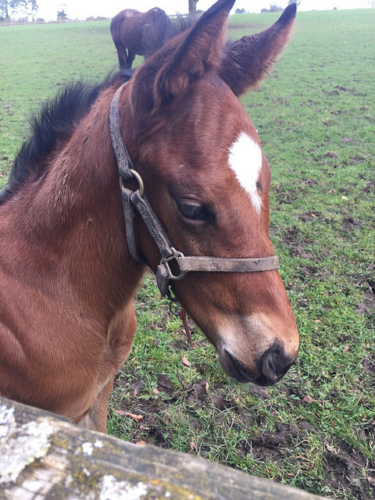
Put out to pasture is a good thing in County Kildare. Photo © Nancy D. Brown
Even if you are not particularly keen on horse racing, you’ll love a day spent at Irish National Stud. The grounds are flat and easily accessible for strollers, walkers and wheelchairs.
From young to old, everyone will be entertained. I loved seeing the mares with their babies, frolicking in the rambling pastures in the vibrant green grass. The horses are obviously happy here, if only for a little while. Other retired race horses spend their golden years here in County Kildare. You’d be hard pressed to find grass greener on the other side. Indeed, when you are put “out to pasture” in Ireland, it’s a good thing.
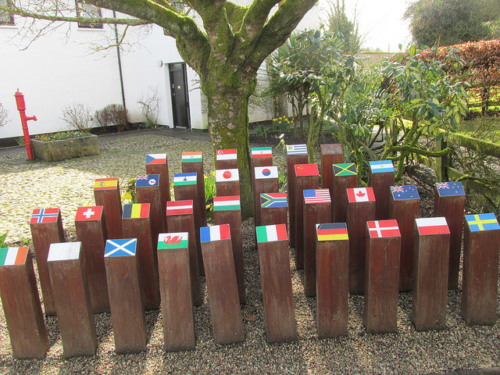
Irish National Breeding Course Flags. Photo © Nancy D. Brown
Stud management – it’s not what you think
What began in 1971 as the first Thoroughbred Breeding Course, the program at Irish Stud continues to be a pioneer in equine training. Attracting young men and women from all parts of the world, the course offers hands-on practical training in every aspect of horse breeding.
Need to Know:
If you are visiting during the summer time, you’ll want to book your tickets online. As of this writing Adults € 12.50, Child (under 5) Free, Children (under 16) € 7.00, Student € 9.50, Family Ticket (2 adults, 4 children under 16) € 29.50. Opening Hours February – November 9:00 a.m. – 6 :00 p.m. (last admission 5:00 p.m.) Price includes guided tour of the Irish National Stud and entry into the Japanese Garden (self-guided tour) St. Fiachra’s Garden and the Horse Museum.
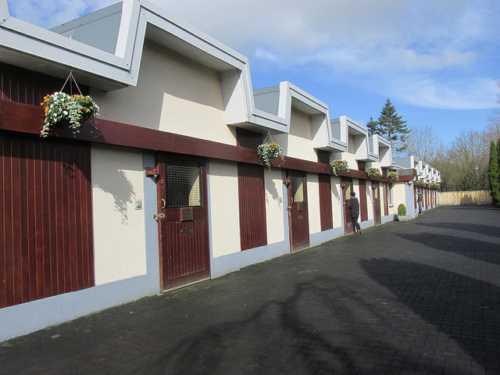
Stallion stalls have skylights so horses can see the stars. Photo © Nancy D. Brown
Insider Tip
While the horses are well fed and looked after at Irish National Stud, you’ll be well fed at the on-site cafe. Family-friendly, we enjoyed a tasty lunch here. The baked goods looked wonderful and the cafe offers afternoon tea.
If You Go:
Irish National Stud & Gardens 353 (0) 45 521617
Tully, Kildare Town, Co Kildare, Ireland www.irishnationalstud.ie
Nancy D. Brown writes the What a Trip blog, and reviews lodging at hotel-scoop.com. Her articles have appeared in Shape magazine, Alaska Airlines, At Home Tennessee, Diablo magazine, San Jose Mercury News, Chicago Tribune, Contra Costa Times and Oakland Tribune newspapers in addition to online publications. An avid equestrian, Nancy reviews horse properties at writinghorseback.com. Based in the San Francisco Bay Area, she specializes in active adventure and luxury travel for baby boomers.








